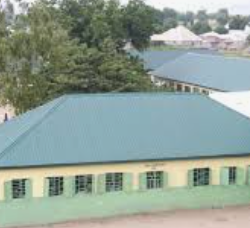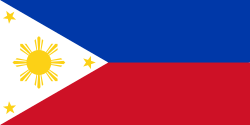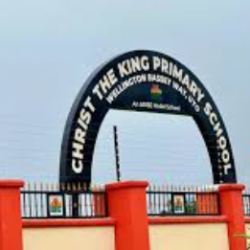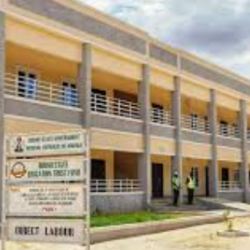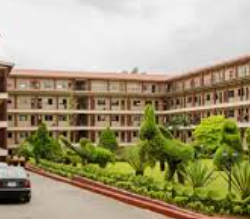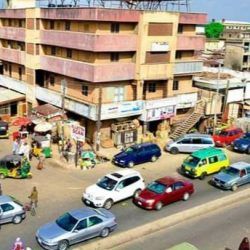Kano is one of the oldest political entities in Sub Saharan Africa. It has over 1000 years of history of centralized authority beginning with the Bagadawa Dynasty.

Establishment of Kano Political Authority
The emergence of central political authority in Kano was closely associated with the foundation of birni (city) Kano itself. This was like other Hausa states were the birane (cities) where the centers of political authority. These cities developed as a result of immigration of diverse groups who have no kinship relationship and were integrated gradually displacing authorities whose power depended on kinship loyalties.
It has been postulated that political authority in Hausaland evolved from farming family groups whose farms were very close to their homes and they were separated by waste-lands. These separate settlements were called kauyuka or unguwoyi (sing. Kauye, unguwa). It was further suggested that authority was of two types family and communal. The communal authority was vested in the sarki (ruler) which was recognized for specific purposes. Especially farming which was the backbone of the economy. The sarkin noma (king of farming) coordinated all the farming activities including the religious rituals for rains. The head of the family unit regulated all other affairs not related to agriculture.

The kauye was a collection of these independent family units gidaje (sing. Gida) each headed by the maigida (family head). The society expanded as a result of immigration of families who were not related to each other unguwoyi and kauyuka merged and became towns garuruwa (sing. Gari). The community leader of the gari was known as sarkin gari who was assisted by ward heads masu unguwanni (sing. Mai unguwa). As the town developed the authority of the sarki became expanded beyond the farmland with diminishing emphasis on kinship since most of the immigrants were not related.
The birni (city) evolved from the gari (town). The birni of antiquity was cosmopolitan; it was an urban center with a considerably large population of diverse groups who lack kinship relations with one and the other. Economic factors were responsible for the growth of birane (sing. Birni) of ancient Hausaland, because only buoyant economy could support a large population. Agriculture supported by fertile soil was the mainstay of the economy. The iron industry also supported agriculture by producing farm implements. Dutsen Dala, which was an iron site, was the foundation of Kano the greatest of all Hausa birane. Birnin Kano became the nucleus of fertile kasar (country of) Kano. Trade and religious attraction was contributed to the growth of kano. Dutsen Dala and Kurmin Jakara both located in Birnin kano were centers of iskokai (spirits) adored by the ancient Hausas. Barbushe the first known Sarkin Kano was a chief priest of Tsumburbura which were also iskokai. For any birni to flourish, it needed security thus another very important feature of any birni of ancient Hausaland was the ganuwa (city wall) which was a fortification. It has been suggested that this security of the birane was an essential element in their emergence as centers of “unusual political power.” The emergence of states in Hausaland appeared to have been linked with the foundation of birane as these centers of political power.
Finn Fuglestad has criticized Abdullahi Smith’s theory of the evolution of the state in Hausaland. He has argued “that the institution and concept of Kinship in Hausaland were not indigenous to Hausaland. They did not grow smoothly out of pre-existing institutions but were on the contrary imposed by people perceived to be aliens.” Still Abdullahi Smith’s theory remains credible at least in kano because there are evidences from the ‘Kano Chronicle’ that indicate execution of some form of political authority by Barbushe and his predecessors apart from their spiritual leadership. It would be safer to assume that Sarauta Kingship institution in Kano was a synthesis of local tradition and new innovations by Bagaudawa who conquered kano sometime in 999 CE.
Political authority is closely associated with class distinction. In Hausaland members of the ruling class were known as masu sarauta and the talakawa are the commoners. The sarki was the head of the sarauta and also the head of state and all the state officials were masu sarauta. The office of the sarki (king) was dynastic and in Kano throughout the pre-jihad era it was vested in the family of Bagauda. The masu sarauta were fief holders given to them by the sarki for their loyalty. The system was complex and it took several years to develop. The most important innovation was the creation of the Tara ta Kano (literally Kano nine) by Sarkin Kano Muhammadu Rumfa. This was the council of state made up of the senior state officials: Galadima, Madaki, and Wambai (always a slave) who were considered greater than the sarki, followed by Makama, Sarkin Jarumai and Sarkin Bai (always a slave) who were considered equal to the sarki and the last three who considered less than the sarki were: Barde, Sarkin Dawakin Tsakar Gida and Turaki.
One of the functions of the Tara ta Kano might have been the selection of the new sarki from amongst the ‘yan sarki (sons of the King). It has been reported that the sarki always feared the consensus of the members of Tara ta Kano. Some members of the sarauta had specific functions for example sarkin kasuwa was in charge of the market, the sarkin kofa was the official gatekeeper. These and some other titles later became less important. The sarakuna of important towns such as Gaya, Birnin Kudu, Dutse, Bebeji and Ringim were later incorporated into sarauta. Rano also later lost its independence and became part of Kano. During the emirate period these sarakuna (kings) were relegated to the status of manyan dagatai (territorial chiefs) and they were considered below other hakimi (district head) in precedence and they became vassals of the powerful hakimi who were resident in the city. There were also sarauta titles that were reserved for royal slaves throughout the history of Kano for example Shamaki, Dan Rimi, Salama, Kasheka, Turakin Soro and Kilishi which other titles were later converted from royal slave titles to the nobility.
The Bagaudawa reign was not smooth as there was opposition from those displaced from power especially the descendants of Barbushe. Two Kings (Sarakuna) of the Bagauda dynasty Gajimasu and Tsamiya consolidated the political gains of Bagaudawa, built upon the foundation for territorial expansion of the community and attempted to socialize different cultures into one single dominant culture. Some of the sarakuna were very innovative. The most famous was Sarkin Kano Muhammadu Rumfa (1463 – 1499 CE/867-0=904 AH). The Kano Chronicler has stated that: “Hecan have no equal in might from the most notable political innovations where the institution of Tara ta Kano as earlier mentioned and conferement of titles on eunuchs. Sarkin Kano Muhammdu Rumfa consolidated the Sarauta (Kingship) with several enduring features Gidan Rumfa (the Palace), Hawan Sallah (procession on the days of Muslim festivals) which is the largest procession of colorful horses (Durbar) in the world, Dawakin Zage (Spare horses for the sarki during battles and processions), Kakaki (trumpet), Figini (Sarki’s fan), Takalmin Jumuna (Ostrich sandals), Tagwayen Masu (twin spears). These regalia of Rumfa have remained part of Kano heritage ever since. The greatest legacy of Rumfa is not materialistic but social and intellectual reponses of Kano even during the most traumatic British colonial enterprises. The Kano leaders where guided by Rumfa’s legacy of hard work, good sense, courage, confidence and above all faith.
The first Islamic scholar who lived in Kano and wrote in Arabic was perhaps Sheikh Abd al-Karim al-Maghili. He was in Kano during the reign of Sarki Rumfa (1463-99). He was a great Maliki Jusrists and Political Theorist. He wrote Ta’if fi ma yajib al-Muluk (The obligation of the Princes) and Mukhtasar mimma yajuz li’l-hukam fi radd al-nas an al-haram (Summary of Permissibility of Turning Away People from Unlawful Acts by those in Authority) to guide Sarkin Kano Muhammadu Rumfa. It is not clear whether he wrote his al-Mughni al-nabil fi sharh Mukhtasar al-Khalil (A commentary on Mukhtasar Khalil) in Kano. Muhammad b. Ahmad (aka Aida Ahmad) (824-936AH/1469-1529 CE) is said to have resided in Kano an other parts of Hausaland he was an author and contemporary of al-Maghili. He was given ijaza (certificate) to teach by some scholars in Egypt and Hijaz and he wrote a commentary on the Mukhtasar. He may have taught in Kano before he became the Qadi (Judge) of Katsina. Another Maliki Jurist who resided in Kano during the Bagaudawa period was Makhluf al-Bilbali apart from his knowledge of Fiqh he was also a Muhadith (scholar of Prophetic traditions) he had memorized the Sahih al-Bukhari. Some of his judgments and legal view have been documented.
From Emirate to Statehood
Shehu Usman Danfodio made Hijra (Migration) from Degel to Gudu (1217 ) February 21 1804. This was after several years of preaching and that culminated in the establishment of his Community (Juma’ah) who were persecuted by the Gobir authorities necessitating this Hijra during the reign of Sarkin Gobir. At Gudu the Shehu’s followers pledged allegiance and formally made him the Amir al-Mumini (Commander of the faithful). The Sultan of Gobir sent an expedition against the Jama’ah as the Shehu’s community and followers came to be know but it was driven back. The Shehu’s followers were also successful against the Gobir army at the famous Tabkin Kwatto battle. Shehu just before his Hijra had instructed his followers from all parts of Hausaland to return to the localities and prepare for the Jihad. He also sent his Wathiqat ahl-Sudan to all parts of Hausaland and there was widespread mobilization against the established order. This culminated in the overthrow of the ruling dynasties of the major Hausa States of Kano, Katsina, Zazzau and Daura and the establishment of new provinces know as Emirates. The previously independent Hausa states and the new provinces gave their allegiance to Sokoto, which was the Caliphate established by the Shehu. It succeeded as the most prosperous and complexly organized state in tropical Africa (Iliffe 1995: 171 and Lubek 1986:12) because it derived its legitimacy from the Islamic allegiance of its citizens. It has been rightly observed that “the Sokoto Caliphate was not properly speaking an empire, since its unity depended not so much on force, as on religious obedience the emirs or provincial governors owed the Commander of the faithful or Caliph at Sokoto” (Crowder 1978). Adeleye (1971) has also emphasized that: “It must be stressed that this loyalty which Sheikh received from the various communities was freely given not imposed.”

The British conquered Kano Emirate in 1903. Kano Emirate has been part of the Sokoto Caliphate since 1807 and was ruled by Emirs, the first was Sulaiman who ws succeeded by Ibrahim Dabo in 1819 and all subsequent Emirs (Sullubawa Dynasty) were his descendants. The British used the Emirate structure to administer the territory in system known as the indirect rule. The Emir was the sole Native Authority who was answerable to the colonial administration headed by the Resident at the Provincial level. Kano Province was made up of Kano Emirate and the Emirates of Hadejia, Kazaure and Gumel but each had its Native Authority that controlled the courts, prisons and local police.
Throughout the colonial period the British tolerated arbitrary use of power by the native authorities so long as it did not obstruct the attainment of colonial objectives of exploitation of local resources and the transmission of European culture. The arbitrary dismissal of district heads by the native authorities during this period was advantageous to the colonial authorities because as tax collectors the fear of dismisal made them more efficient. The British encouraged autocracy in judicial matters they had wanted Sarkin Kano Abbas to use his discretion on judicial issues so that the Sharia’h could be gradually abolished but he declined because of his religious consciousness.
Agitation for national independence increased after the Second World War partly because of returning soldiers who had become more enlightened as a result of their participation in the war and as well the gradual dissolution of the British Empire. The first political association to be formed in the Northern Region in August 1950 was the NEPU. Its first leader was Malam Abba Maikwaru of Fagge an Islamic Scholar and a community activist. He was a frontline member of Taron Masu Zumunta (TMZ) a grass root organization. Malam Aminu Kano resigned his teaching appointment in November 1950 and he later became the President General of the NEPU. The Northern Peoples Congress (NPC) was the party of the establishment. It has been described as the political party expression of the Native Authority and the sarauta. The emerging merchant capitalist class contributed to the financing of the party in order to maintain their dominant position in the commodity export trade. The party won most the elections in Kano and other parts of Northern Nigeria. Its leader was Sir Ahmadu Bello (Sardaunan Sokoto). It formed government in the Northern Region and Ahmadu Bello was the Premier. It also formed government at the Federal level because it had more seats in the parliament and it was in alliance with other parties. Sardauna’s deputy Sir Abubakar Tafawa Balewa thus became the Prime Minister of the Federation. The NPC was committed to the transfer of power to Nigerians who will maintain the status quo because of their association with colonial establhisment. All NPC ministers at the regional and the Federal level were former Native Authority employees and traditional titleholders.
The military overthrew the first republic in a bloody coup on January 15 1966 and ruled the country for thirteen years. There was a civil war from 1967 to 1970 when the Eastern Region attempted to secede in the name of Biafra under the leadership of Col. Ojukwu but the Federal side led by General Yakubu Gowon was victorious. It was General Gowon’s administration that created Kano State in 1967. In 1991 Jigawa State was carved out of Kano State by the General Ibrahim Babangida regime.





